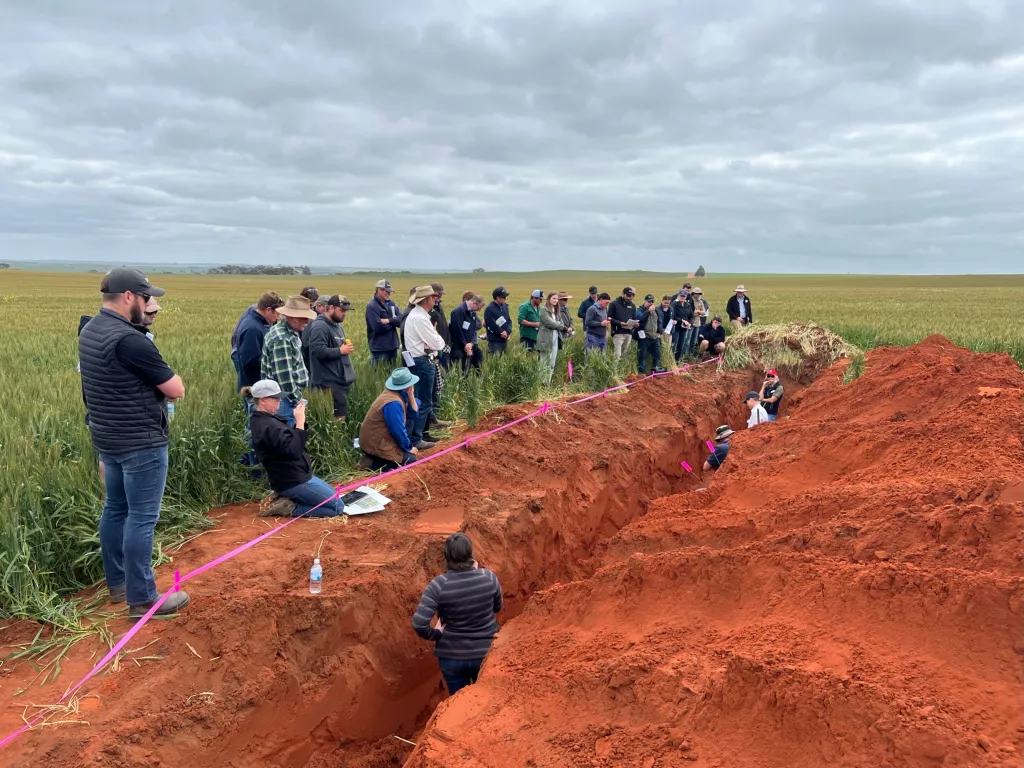‘Flexible & Diverse Mixed Farming Systems’ Discussion Event – Farmer Summary
By Simon Kruger, WMG Project Communications Officer
Graham ‘Johno’ Johnson – Leearna Farm, Dandaragan
Opened up in the 50’s and cleared by his father, Johno took over Leearna Farm in the 80’s after the wool crash. The farm started conventionally with a focus on cropping and achieving higher yields but while yields were continually going up, inputs were also increasing. Around the 2000’s Johno made the decision to begin working towards a more ‘mixed’ farming system prioritising working with nature when yields started plateauing and the farm was having more issues with insects and diseases. Over the years Johno has worked ‘bit by bit’ to diversify his operation, with Leearna Farm continually evolving, now being 50% certified organic with a focus on diversity, long term sustainability and trying to keep away from the ‘nasties’.


Initial Discussion – Organic Operation
Leearna Farm has achieved 50% organic certification, primarily focusing on organic beef production with an expansion into organic lamb (Ultrawhite breed).
- Breeding and Finishing: Calves are bred at Leearna and then moved to Dandaragan Organic Beef for finishing with the Cook family.
- Quarantine and Organic Pastures: Upon arrival, animals undergo a 3-week quarantine period in designated paddocks before being introduced to certified organic pastures.
- Calving and Herd Management: Replacement PTIC cows are brought in before the last trimester for calving. The cows never become organic certified. Only the calves grazed on certified organic land for at least the last trimester and all their life are eligible to be certified organic.
- Rotational Grazing: Johno utilises rotational grazing, typically with a single large mob (ranging from 80 to 300 cattle) followed by sheep during the growing season. Sheep are particularly effective at eating radish that the cattle refuse to touch.
- Soil Stewardship: Rotational grazing is employed not only for herd management but also to promote soil health. Johno is continuously seeking the best practices for sustainable land management and those that fit his system.
Paddock 1 – Turning Around a Challenging Paddock


Through dedicated effort and learning from setbacks, Johno has transformed one of Leearna’s worst paddocks into its best. This transformation required time and continuous adaptation. Each hurdle presented valuable learning opportunities for Johno.
- Building with Treelines, Tagasaste and Perennials: In 2009 a single 95 Ha paddock was split into 4 cells with 30 m fenced treelines being planted to a large variety of trees and shrubs. Wide spaced Tagasaste with inter row perennial grasses was established inside the cells,
- Managing Tagasaste: Tagasaste is cut back every 3-4 years to maintain its growth.
- Addressing Sandy Soil Challenges: After initial setbacks with wind erosion stripping out the newly planted perennials, Johno incorporated 250t/ha clay, significantly improving soil stability and non-wetting. Then replanted perennials to avoid having bare areas.
- Minimal Additional Inputs: Beyond the initial soil improvement with clay, there has been only one application of guano and lime since 2007.
- Success Through System and Grazing: The combination of implementing a well-defined system and employing rotational grazing practices has been key to the paddock’s success.
Based on his experiences, Johno suggests the best success can be found in a 3-step system:
- Invert: This initial step may involve disturbing the existing soil structure, potentially through soil amelioration or controlled grazing.
- Stabilise: Incorporate organic matter and consider amendments like clay and guano, depending on needs and availability.
- Sow: Once the soil is stabilised, introduce suitable pasture species, and implement a rotational grazing system.
Johno emphasises that this approach yields benefits beyond increased pasture production. The management has restored biodiversity, enhanced birdlife, and provided shelter for livestock.
Paddock 2 – First Crack at a Multispecies Mix

This section highlights Johno’s approach to utilising a 65-hectare paddock for lamb production with a multispecies pasture mix.
Paddock History and Preparation
- The paddock was initially set up by using a knockdown, spreading crushed lime/dolomite, offset discing to incorporate and reduce non wetting.
- The sowed multispecies mix included barley, lupins, wheat, cereal rye, clover, serradella, vetch, tillage radish, and forage brassica.

Planting and Grazing Strategy
- The mix was sown relatively late in the season on June 30th at 60 kg/ha of seed and 80 kg/ha of guano.
- No further inputs or sprays applied.
- On September 23rd, 500 mixed sex lambs were introduced to the paddock. 200 wether lambs were drafted off at the end of November with an average weight of 60kg and carcase weight of 28.2 kg. The remaining lambs stayed on the paddock with very minimal lupin supplementation until 14th February when the dam water quality deteriorated.
- The lambs displayed clear preferential grazing, with radish, brassica, lupin, and vetch being consumed first, followed by barley, wheat and finally the cereal rye.
- Another paddock nearby was locked up and successfully harvested as mixed species seed for the following season to be sown in other paddocks.
Future Plans
- The paddock will be left undisturbed this season to allow the multispecies mix to regenerate naturally, enabling Johno to assess its performance in the second year.
Key Takeaways
- The lambs thrived on the diverse forage options provided by the multispecies mix.
- The cereals, especially cereal rye played a crucial role in providing summer cover and soil stabilisation.
- Maintaining a balanced ratio within the mix, with lower cereal content, is recommended to avoid dominance and ensure successful establishment of other species.
- The success of this paddock allowed Johno to purchase an additional merino trade mob, demonstrating the positive impact of this strategy on farm operations.














